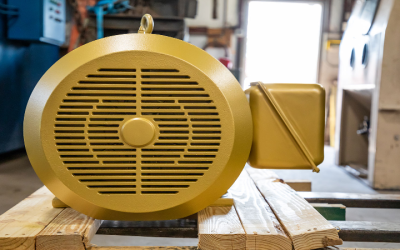Screw conveyors are known as spiral and worm conveyors. They are used to move material along a plane. Screw conveyors are made up of a screw called the helical screw which circles around a central shaft. The helical screw can function within a trough or a compartment to take advantage of the rotational force that it gets from circling the central shaft.
Types of Screw Conveyors
There are several types of screw conveyors. The ribbon, the flexible and the plastic screw conveyor are all used to move various materials. Ribbon screw conveyors are made up of sectional flights that are welded together. They form a continuous helix. Flights are fixed to the pipe with support legs. Each end of the pipe has an internal collar and drill holes for shafts and couplings. Flexible screw conveyors are capable of transferring materials such as powders, granules, flakes and pellets because of their non-pulsing action.
This type conveyor can be used as both loss-in and gain-in weight metering feeders. The plastic screw conveyor has properties that are abrasion resistance, low friction and is made of extrusion plastic polyethylene and extrusion plastic nylatron.
Use for Screw Conveyors
In addition to moving materials, screw conveyors are also used to agitate, blend or mix materials. In the agricultural industry they are in threshers and balers. Screw conveyors are one of the best solutions for operating systems that transport hard to move materials that are wet, cakey or non-flowing.
Manufactures of screw conveyors also offer the necessary components for repair and maintenance of machines. The conveyors use a wide range of bearings, stands, tubes and fasteners. They also need screws and the screw casings. Sometimes a motor is required to power the motion of the screw or in some systems, the blade will need replacement. Most manufacturers will generally use materials that are resistant to wear and corrosion. Carbon steel is usually used to make the parts and electric and fuel is used as the power sources.
It is important to know the type of conveyor that is being used. Different models require different parts and are used in different ways. The bottom conveyor for example, uses an open trough that has multiple screws. A conveyor without a center does not have a central shaft. Instead it has an empty helix. This design will allow for more freedom within the casing and still give movement in the substrate.
It is important to have someone who is experienced to work on the screw conveyor as things being moved must be properly handled. For example, oversized materials that are easily degradable must be moved at reduced speeds and trough loading must be kept to a minimum. In situations where harmful vapors or dust is being transported, the conveyor must be sealed with dust tight troughs or tubular housing.


